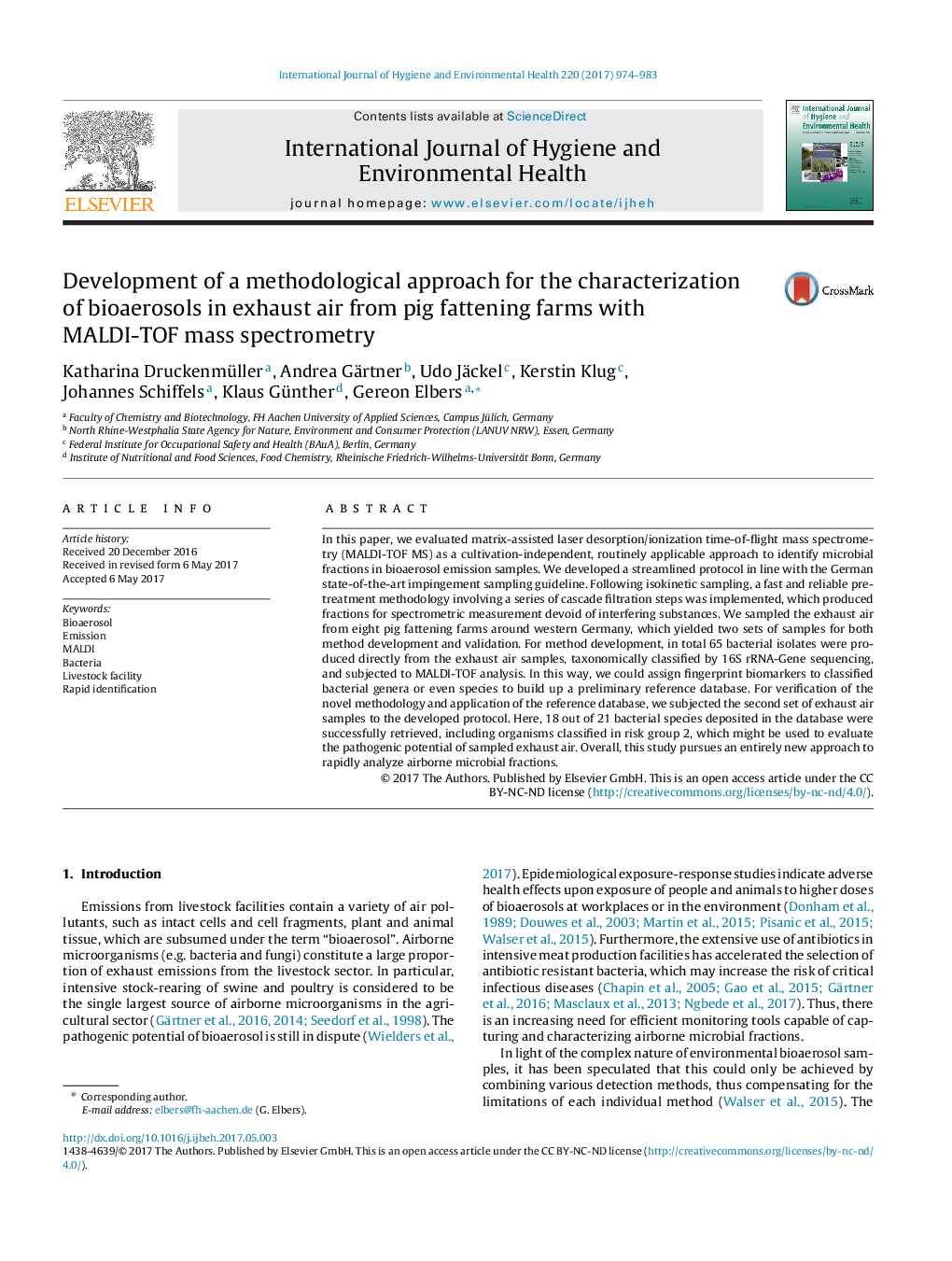| Article ID | Journal | Published Year | Pages | File Type |
|---|---|---|---|---|
| 5560473 | International Journal of Hygiene and Environmental Health | 2017 | 10 Pages |
In this paper, we evaluated matrix-assisted laser desorption/ionization time-of-flight mass spectrometry (MALDI-TOF MS) as a cultivation-independent, routinely applicable approach to identify microbial fractions in bioaerosol emission samples. We developed a streamlined protocol in line with the German state-of-the-art impingement sampling guideline. Following isokinetic sampling, a fast and reliable pre-treatment methodology involving a series of cascade filtration steps was implemented, which produced fractions for spectrometric measurement devoid of interfering substances. We sampled the exhaust air from eight pig fattening farms around western Germany, which yielded two sets of samples for both method development and validation. For method development, in total 65 bacterial isolates were produced directly from the exhaust air samples, taxonomically classified by 16S rRNA-Gene sequencing, and subjected to MALDI-TOF analysis. In this way, we could assign fingerprint biomarkers to classified bacterial genera or even species to build up a preliminary reference database. For verification of the novel methodology and application of the reference database, we subjected the second set of exhaust air samples to the developed protocol. Here, 18 out of 21 bacterial species deposited in the database were successfully retrieved, including organisms classified in risk group 2, which might be used to evaluate the pathogenic potential of sampled exhaust air. Overall, this study pursues an entirely new approach to rapidly analyze airborne microbial fractions.
Graphical abstractDownload high-res image (293KB)Download full-size image
